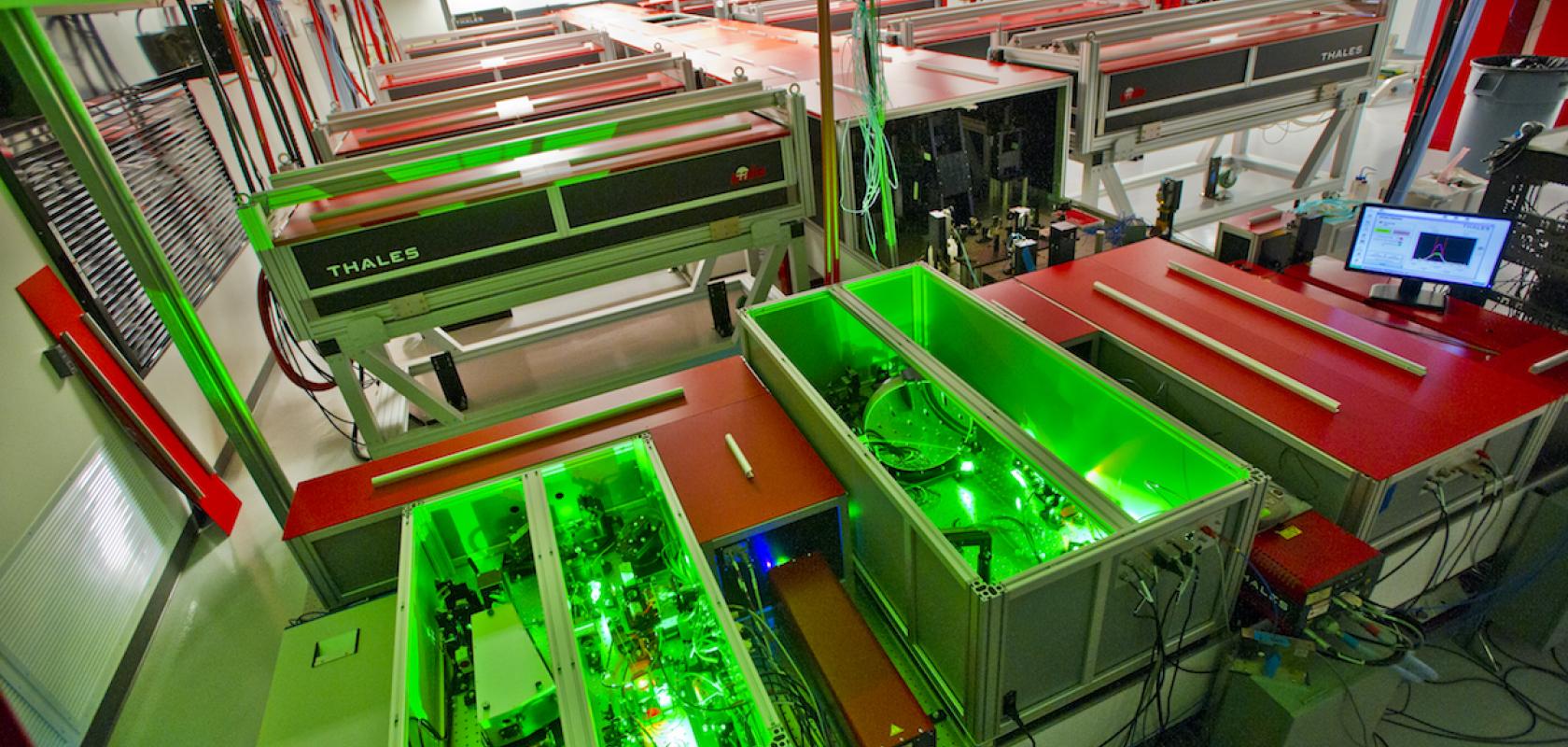A new US research network called LaserNetUS has been established with a two-year $6.8 million grant from the US Department of Energy in order to provide scientists with increased access to high-intensity laser facilities at nine institutions across the country.
High-intensity lasers have a broad range of applications in basic research, manufacturing and medicine.
They can be used to recreate some of the most extreme conditions in the universe, such as those found in supernova explosions and near black holes. They can also generate high-energy particles for high-energy physics research, or intense x-ray pulses to probe matter as it evolves on ultrafast time scales. They are also promising in many potential technological areas, such as for generating intense neutron bursts, which could evaluate aging aircraft components, or potentially deliver tightly focused radiation therapy to cancer tumours.
The institutes of the LaserNetUS network offer the most powerful lasers in the United States, including lasers with powers approaching or exceeding a petawatt – one million billion watts of power, equivalent to nearly 100 times the output of all the world’s power plants. Using chirped pulse amplification, a technology pioneered by two of the winners of this year’s Nobel Prize in physics, these high-intensity lasers fire off bursts of light shorter than a tenth of a trillionth of a second.
The LaserNetUS network consists of the University of Texas at Austin, Ohio State University, Colorado State University, the University of Michigan, the University of Nebraska-Lincoln, the SLAC National Accelerator Laboratory, the Lawrence Berkeley National Laboratory, the Laboratory for Laser Energetics in Rochester, and the Lawrence Livermore National Laboratory.
‘I expect this network to energise the high-power laser community in the US by leveraging some of the excellent existing facilities and motivating future investments,’ remarked Gilliss Dyer, department head of the Matter in Extreme Conditions facility at the SLAC National Accelerator Laboratory. ‘There are many talented scientists in this field who need better access to laser facilities to try their ideas.’
LaserNetUS held its first annual meeting at the University of Nebraska-Lincoln, home of the Extreme Light Lab, in August 2018, and will hold a nationwide call for user proposals to access the network’s facilities. The proposals will be peer-reviewed by an independent panel. This process will allow any researcher in the US to request time on one of the high-intensity lasers at the LaserNetUS host institutions.
While the US previously held the position of the dominant innovator and user of high-intensity laser technology in the 1990s, Europe and Asia have now taken the lead, according to a recent report from the US National Academies of Sciences, Engineering and Medicine.
The report indicated that between 80-90 per cent of the world's high-intensity ultrafast laser systems, as well as all of the world’s highest-powered research lasers, are located outside the US. The authors of the report therefore recommended the establishment of a US national network of laser facilities to emulate the successful efforts being made in Europe. The LaserNetUS has been established to this end.
Thumbnail caption: BELLA, the Berkeley Lab Laser Accelerator (Credit: Roy Kaltschmidt/Berkeley Lab)


